‘This Is Me’: Soprano Heidi Stober on Leaving It All On Stage
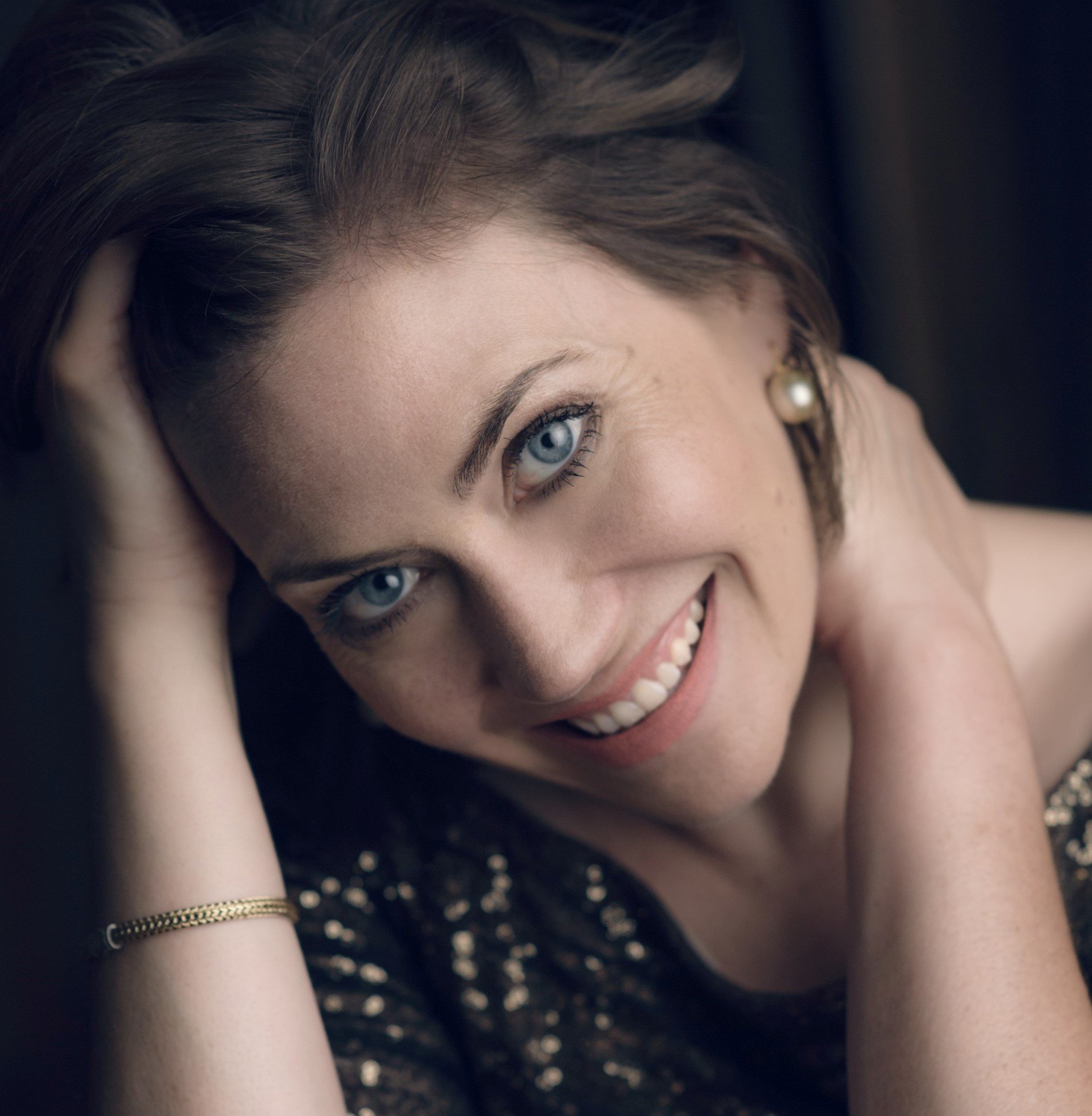
“We did everything for our little touring show,” Stober recalled in a recent telephone interview. “We packed the entire set and all the costume pieces. We would set up. We would break it down.”
And Stober, being the soprano of the group, was often the first to step on stage and sing. “We were performing for some kids who maybe had never heard any live music before in any way, shape or form,” she says.
Some of the kindergarteners in the front row would inevitably clap their hands over their ears, surprised at the power of an opera singer’s voice. But what Stober remembers most is how their eyes would grow wide, their faces lighting up as they got swept up in the opera.
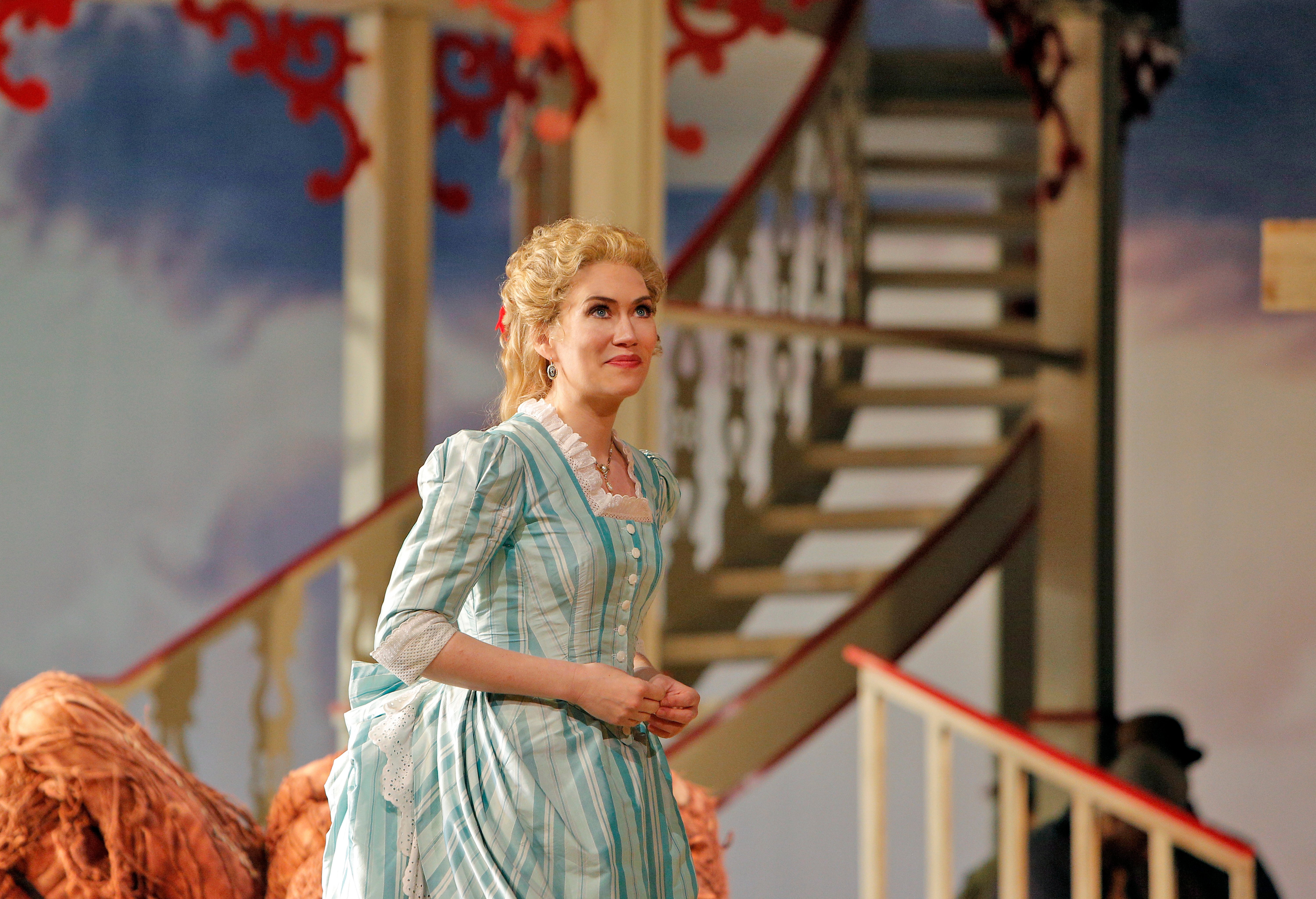
Stober is one of contemporary opera’s great chameleons. Her repertoire defies type: At San Francisco Opera alone, she has performed in light Mozart comedies and heavy Verdian sagas, her roles spanning from bel canto to Baroque. She has even starred in musical-theater staples like Show Boat and Sweeney Todd, alongside Broadway and TV stars.
And that’s just at one opera house. This past June, she performed her first Wagnerian work at Deutsche Oper Berlin. And during the heights of the coronavirus pandemic, she expanded her portfolio to include electronica and dance music, recording a track with Berlin-based DJ Micky Friedmann. Their latest single just dropped in August.
But as Stober prepares to return to San Francisco Opera to debut yet another role—this time in Dialogues of the Carmelites—she explains that what all these experiences have in common is a sense of release: that she can be exactly who she is meant to be on stage.
That doesn’t mean performing is an escape though, and Stober is quick to make the distinction.
“I don’t want to think, ‘I play these different characters and then I get to just pretend and I escape my real life.’ No, because I bring so much of my real life onto the stage with me,” she explains. “This is me. This is the essential core.”
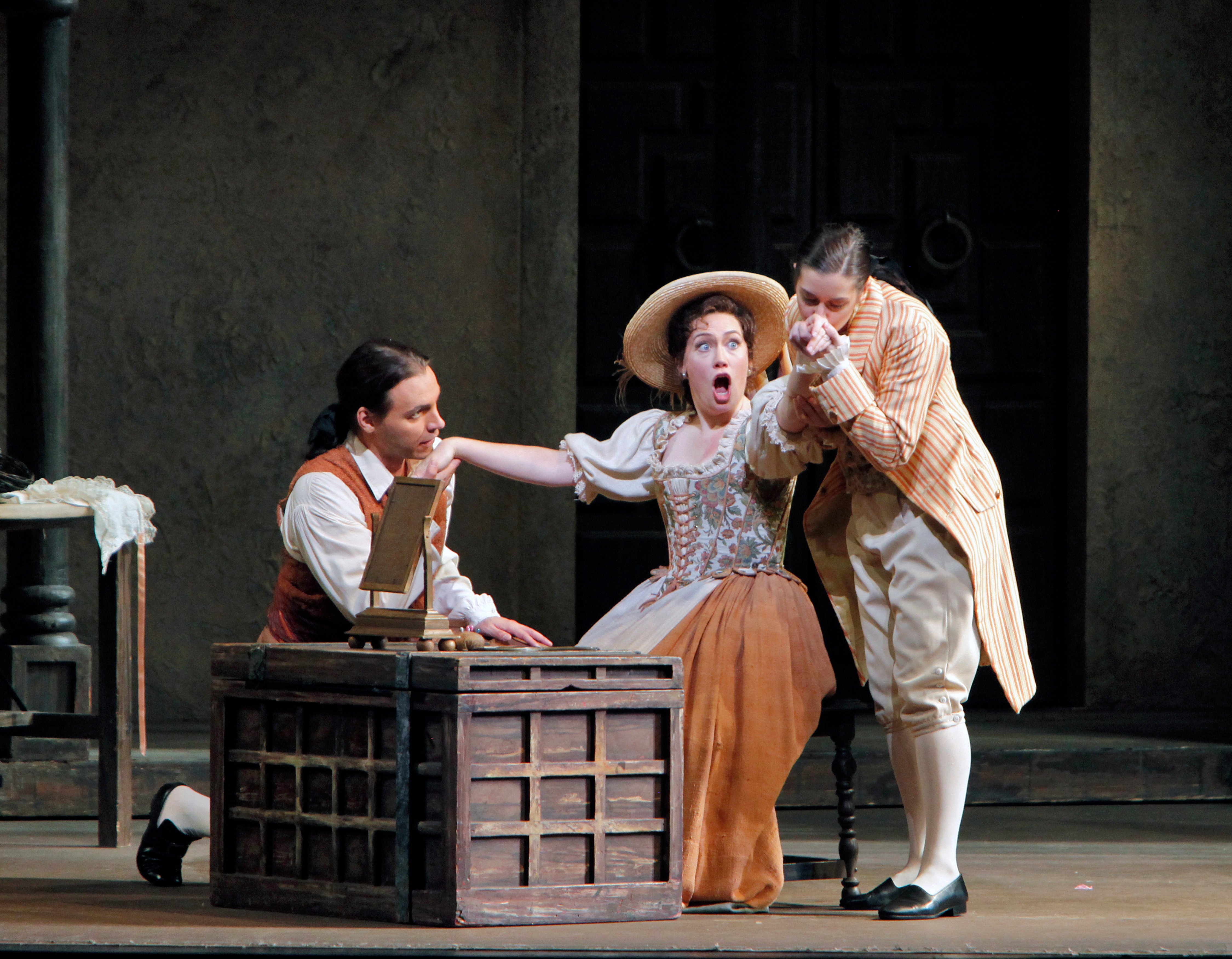
Discovering ‘Pure Love’ in the World of Song
It’s a realization Stober came to at an early age. The third of four children, born to a pilot-turned-businessman and a nurse living in Waukesha, Wisconsin, Stober always remembers having a piano in the home.
Her elder brother was six years older, and he took piano lessons, a subject of endless fascination for the young Stober. “I know sometimes I would make him crazy,” she laughs. “He’d be practicing, and I would be dancing around him to whatever he was playing.”
At age 5, Stober followed in his footsteps, training on the keyboard herself. But recitals and competitions were a source of great anxiety.
“The thing is, I love the instrument and I love playing, but when I enjoyed it the most—or really, the only time I really enjoyed it—was when I would be by myself, playing with no one else watching, listening,” she says.
She came to see the stress as simply the cost of performing. But something clicked when she joined choir in high school. As an upperclassman, she was given a solo to perform. And maybe it was the adrenaline, maybe it was the excitement, but Stober started to feel something she never had before.
“What I felt exuding outside of myself—from the deepest point within—was pure love and enjoyment and bliss. And I thought, ‘This is completely different than anything I've ever felt as a pianist,’” she says.
Stober was hooked. She had always loved singing—even making up songs to record on a tape recorder as a little girl—but that moment would prove to be a turning point.
“I've known, from that moment on, how important singing was to me and how deep, deep it comes from inside of me, this love and this passion and this feeling of calling,” Stober explains.
Though she initially went to university to study environmental science and choral education, gradually her focus started to shift to vocal performance. She saw her first opera as a university student, and though she found the production “a bit boring,” she was not deterred. She discovered other operas that fired her imagination.
Her first role came in a production of Gian Carlo Menotti’s The Old Maid and the Thief, a small-town drama about two women who fall in love with a burglar—and start stealing on his behalf to convince him to stay. Singing in that production reaffirmed her love for opera. It would become her career.
“I feel very strongly that opera is the one art form that literally has all other art forms represented in it,” Stober says. “You have dancing, you have singing, you have orchestra, you have acting. Everything. There isn't another performing arts or art form that combines everything, in my opinion.”
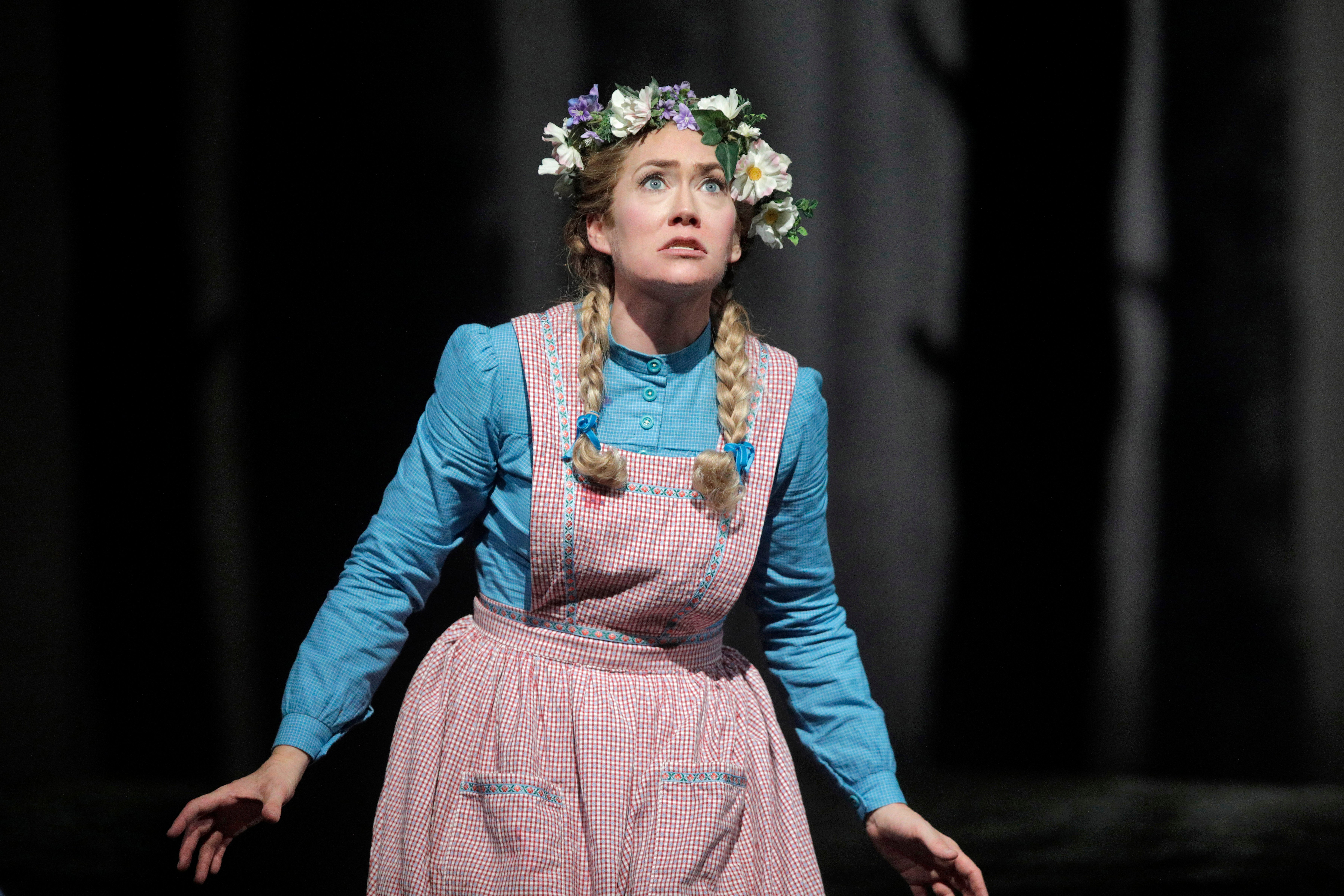
Crutches, On-Stage Injuries and the Pressures of Performance
After a master’s degree at the New England Conservatory and a stint in the young artist studio at the Houston Grand Opera, Stober quickly landed a contract with Deutsche Oper Berlin, the city’s largest opera house and a coveted destination for opera singers.
Stober imagined she would stay there for two years max. Instead, she spent the next six years working for the company in its ensemble. Berlin became her home.
She continues to feature prominently on the Berlin opera stage, but since 2014, Stober has turned to freelance work full time, traveling the world. She laughs that her pilot father would call it the “bag drag,” bouncing from city to city.
It can be lonely. Back home in Berlin, Stober has a husband who’s a physical therapist and osteopath, and a son who’s only nine. He just joined the children’s choir at the Deutsche Oper Berlin, where he’s learning to sing in La Bohème.
“He understands how lucky I feel to be in this career. Not everybody who studies this ends up getting to do this as their profession,” Stober says. Last time she performed at San Francisco Opera, in 2019’s Hansel and Gretel, her son attended every performance.
And whether it’s a children’s fable or a tale of kings and queens, Stober fully invests in her characters. She considers acting to be as crucial as the music she sings.
That deeply emotional and physical investment in her character-building has come with a cost in some cases. In 2016, while rehearsing for San Francisco Opera’s Don Pasquale, she injured her ankle in rehearsals. She was consigned to crutches.
For weeks, it was unclear whether she would be able to perform on opening night — but she did, her cast carefully camouflaged under skin-colored tights.
A year later, an even greater injury would befall Stober. It was opening night for Semele at the Garsington Opera in England. And Stober was starring in the title role, as a princess tangled in an ill-fated love affair with the god Jupiter.
The tenor was in the midst of his aria, chorus members lying around him. Stober’s job was to run on stage in high heels, freeze, then pivot. Her body turned. Her knee did not.
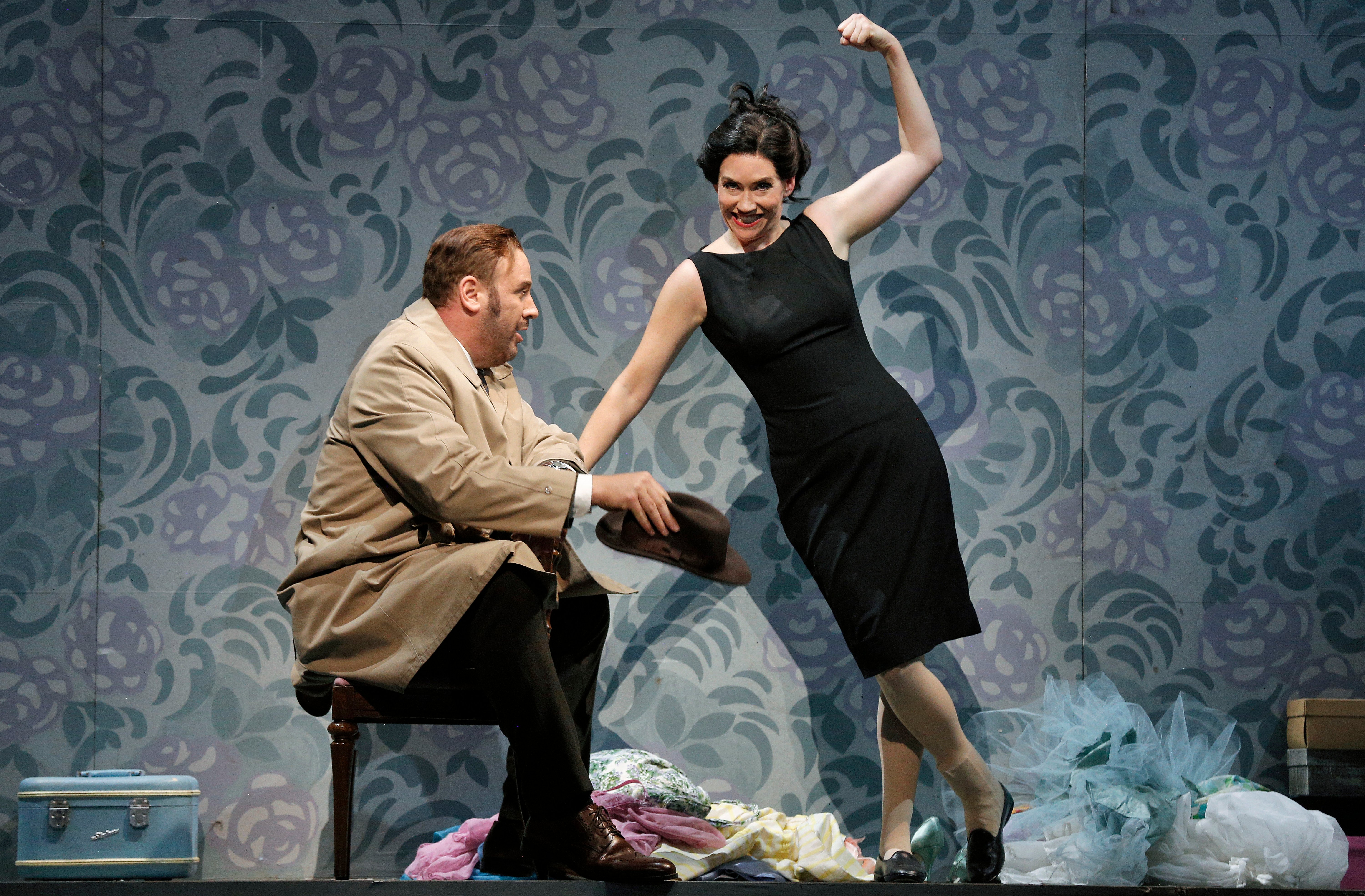
She would later discover that she had completely torn her anterior cruciate ligament (ACL), the band of tissue that links the thigh to the shin. It’s an injury common to athletes.
“It's the craziest ripping sensation that happens in your knee when that happens,” Stober says. “I will never forget that feeling and sound.”
Flush with adrenaline and stuck in the middle of a scene, Stober kicked off her heels right there on stage. She signaled to chorus members to help her into the wings. Backstage crews quickly wriggled her out of her skin-tight sequin pants and put an ice pack on her knee. Semele had some of her most difficult arias coming up in the third act. Stober limped back into action.
“Once the show was done and my body crashed and my adrenaline crashed, I just started crying before my curtain call,” Stober recalls. Not even the conductor had realized what had happened. He thought her tears were self-flagellation.
Still, the reviews were largely glowing. “The American soprano Heidi Stober sang with rock-solid security and diamantine sparkle in the title role,” the Telegraph proclaimed. The Guardian described her as “all creamy tone and gleaming high notes.”
Tackling a New Role in ‘Dialogues of the Carmelites’
“I am the kind of performer who is willing to go for it 150 percent,” Stober says. Now in Dialogues of the Carmelites, Stober faces her latest challenge in the character of Blanche de la Force, a noblewoman who wavers over her commitment to become a nun.
The opera is set during the French Revolution, a time when the Catholic Church was under attack. It tells the true story of a group of nuns and lay sisters who faced the guillotine should they not renounce their faith.
In the opera, the fictional Blanche is gripped with fear—and runs away from the convent as death closes in. But she ultimately summons her courage for a last act of bravery on behalf of her sisters.
A religious person herself, Stober says she finds herself connecting with her character’s struggles with fear and judgment. The difficulty lies in capturing the sudden mood changes Blanche goes through—and the language that’s captured in.
“There can be such quick shifts in one sentence she says,” Stober explains “What emotional and mental place do I think she’s in behind each of those words? And what color, then, do I bring to each word?”
Though the opera is set in a specific time period, Stober hopes the audience understands it as a universal story: one of friendship, community and overcoming fear.
Those universal stories are what she’s been aiming for all along. Even back in her days touring the schools of Utah, she knew she couldn’t just “phone it in.” Every story had to be real, raw, immediate to sustain the audience’s interest—whether they be kindergarteners or seasoned opera-goers.
“You have to bring the energy,” Stober says. And that’s what she dedicates herself to doing.
See soprano Heidi Stober in Dialogues of the Carmelites, on stage October 15 through 30, 2022, as part of San Francisco Opera’s 100th season. And follow her on Twitter at @HeidiStober.

